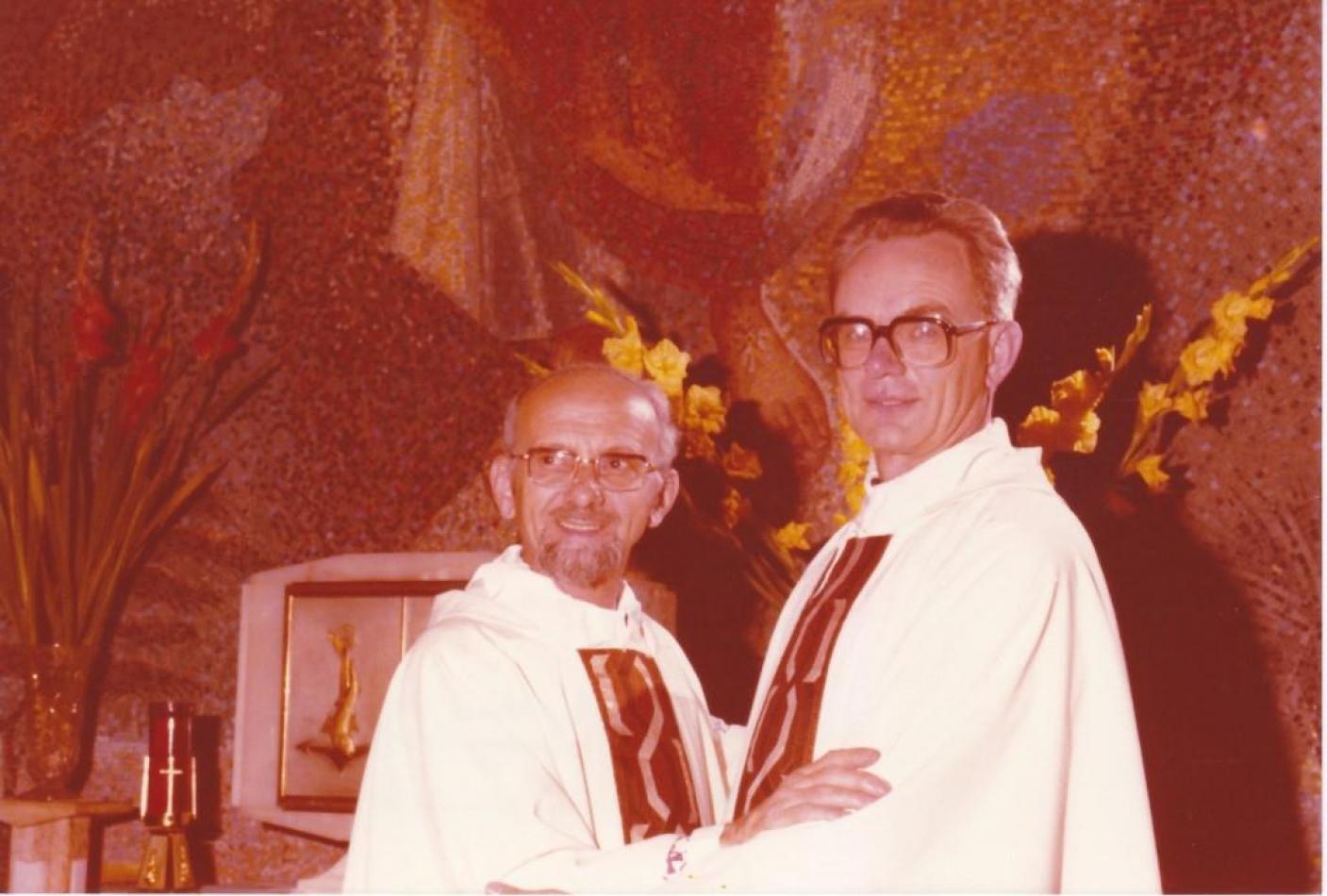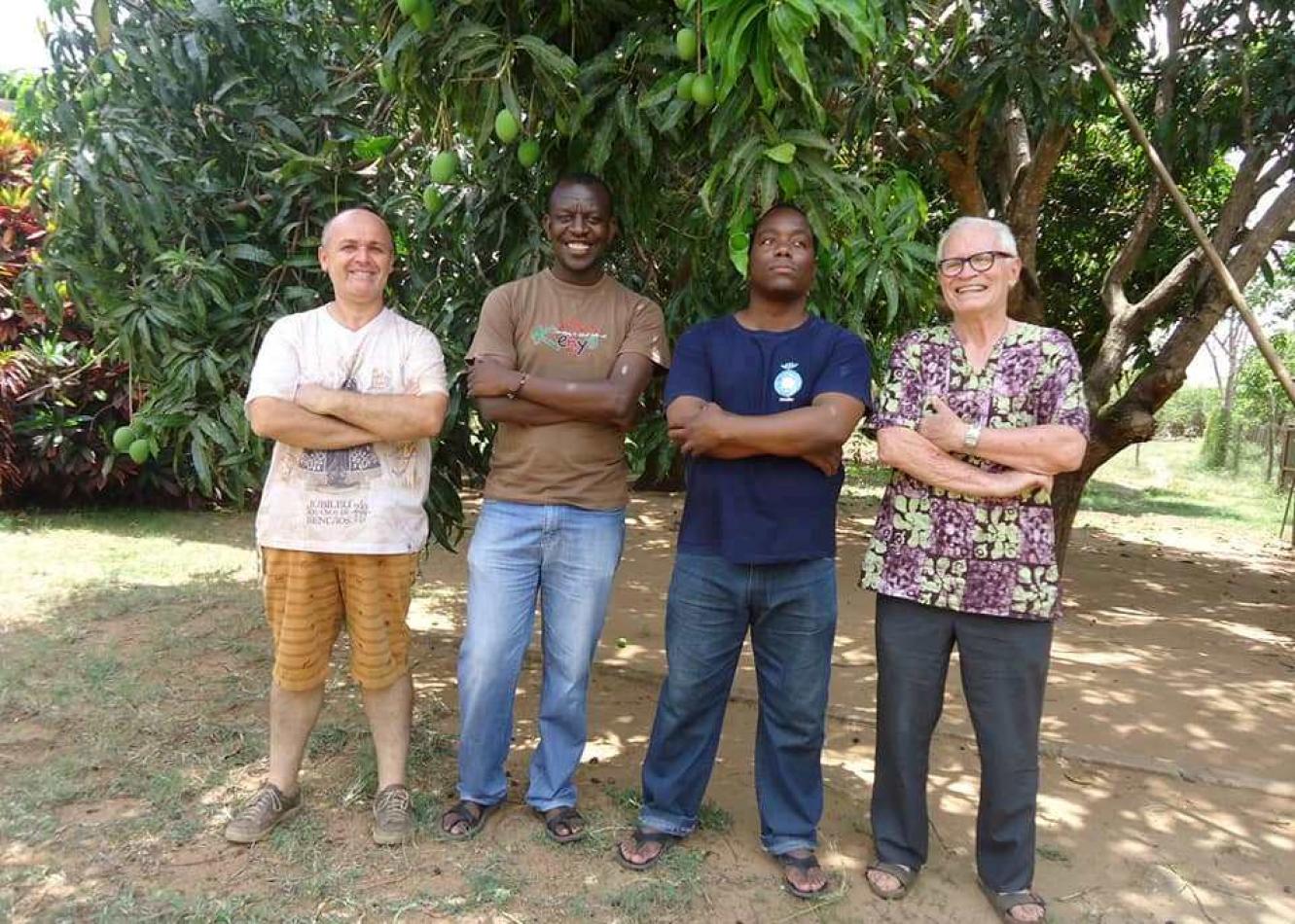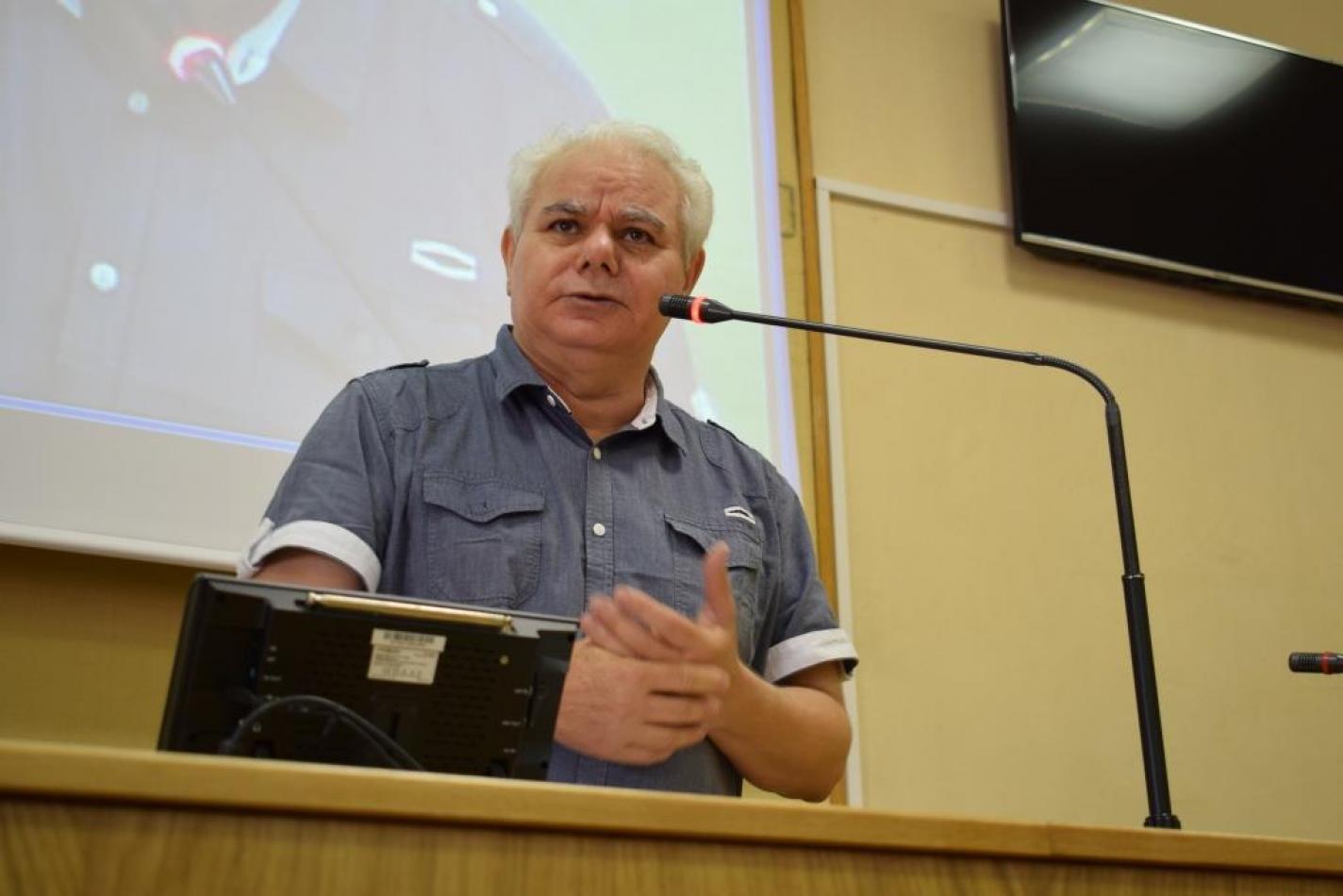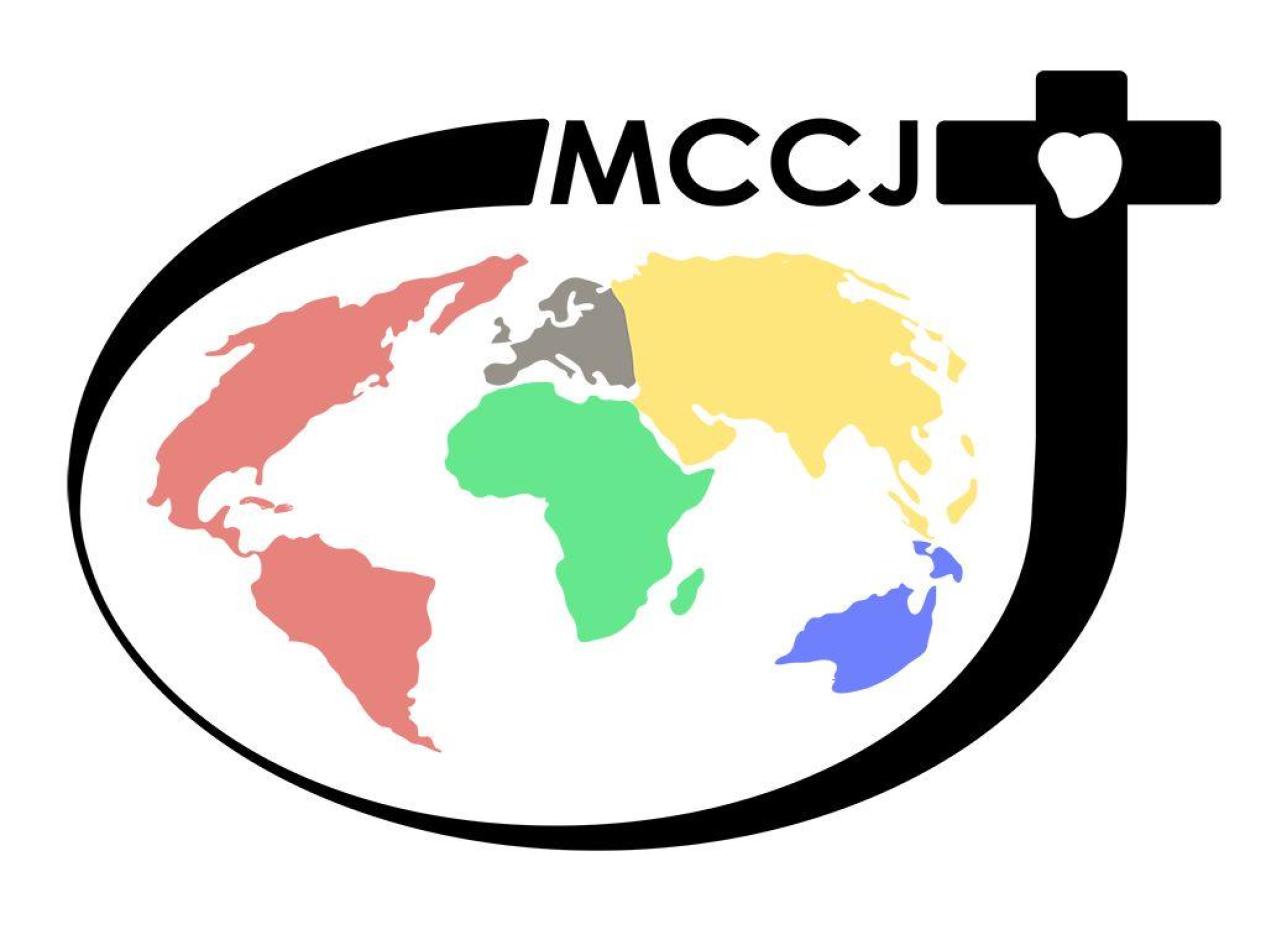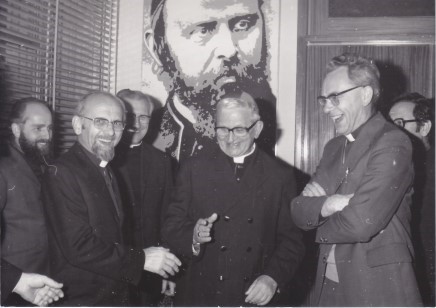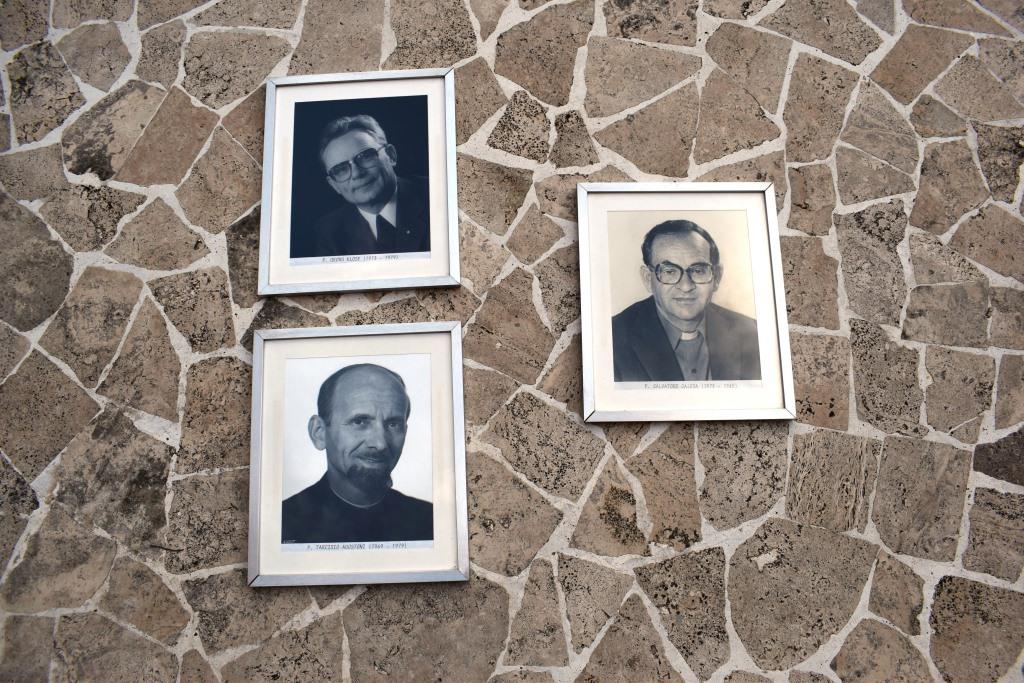Daniel Comboni
Comboni Missionaries
Institutional area
Other links
Newsletter
Monday, March 4, 2019
“I was asked to write an article on the reunification of the two Institutes – FSCJ and MFSC – into one Comboni Institute, with some useful reflections on interculturality, the theme of this year. I will confine myself to presenting some brief comments based on my personal experience”, says P. Alois Weiss, mccj. In the picture: the embrace between the two Superior Generals, Fr. Tarcisio Agostoni (left) and Fr. Georg Klose.
I would like to start by mentioning a display poster I saw on January 19, in the church of our parish in Lima-Chorrillos. It was on the occasion of the ordination to the diaconate of Alessio Geraci, by our Comboni confrere Mons. Luis Alberto Barrera Pacheco, Bishop of Tarma. The upper part of the poster showed the embrace between the two Superior Generals, Fr. Tarcisio Agostoni and Fr. Georg Klose, on the day of reunification, the Feast of the Sacred Heart, 22 June 1979; the lower part showed an image recalling the eighty years of Comboni presence in Peru and Latin America; at the foot of the poster was a picture of our Founder, Saint Daniel Comboni, with the inscription: “If I had a thousand lives, I would give them all for the mission”.
The three scenes cannot be explained without that meaningful embrace that sealed the reunification and reconciliation after fifty-six years of division, starting in 1923, after the First World War, a war of opposing nationalisms and conflicts. Without reunification there would not have been eighty years of presence in the Province of Peru, which still has a measure of vitality thanks to the fact that interculturality has already become a shared experience. The provincial assembly in January this year was attended by Combonis of thirteen different nationalities from four continents, who gathered to reflect together on the theme: “They understood each other through the language of love”, taking as a paradigm the Cenacle of Pentecost. Without reunification, there would have been no beatification of Comboni (1996) or his canonisation (2003), because, as we all know, a renewal of the Institute was required before he could be made a saint.
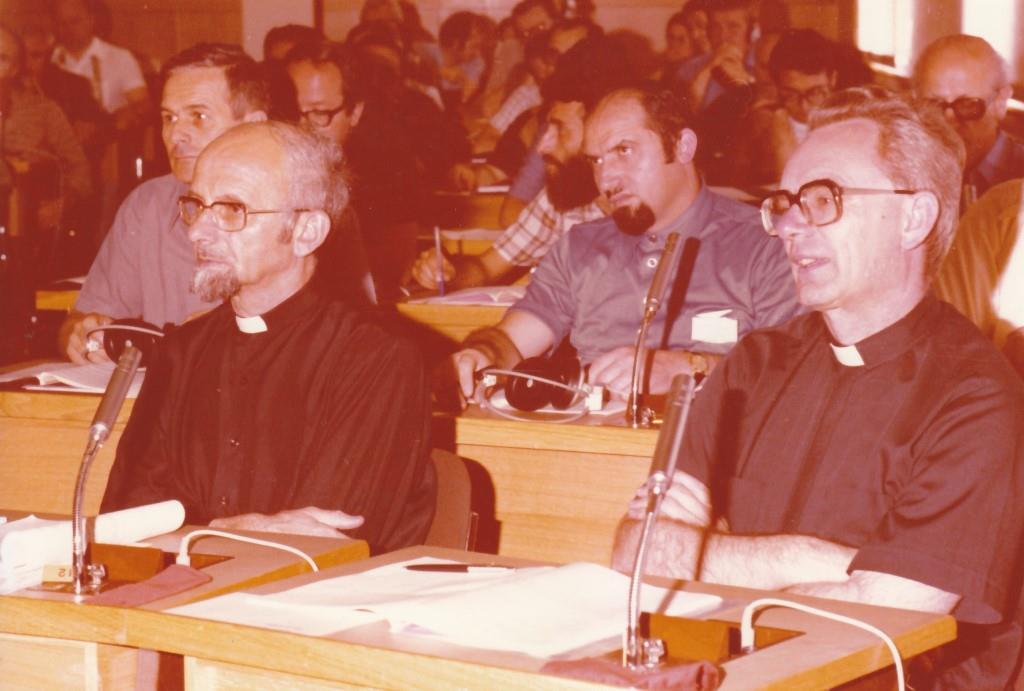
Structural renewal
A renewal took place in our Institute which we may describe as structural, with the special General Chapter of 1979 – exactly forty years ago – at which Chapter members of both Institutes, separated until that moment, took part. Together, a new “Rule of Life” was formulated containing the statutes of the new Institute; a new name was chosen, the result of long and profound discernment, as we read in the Letter on the New Name of the Institute, attached to the Rule of Life, on 29 July 1979.
I well know that there are Combonis who hardly noticed this passage towards a new Institute because they belong to younger generations and also for other reasons. For the most part, the passage took place automatically. However, it strongly impacted the Combonis working in the provinces of Peru and South Africa: those provinces became international with a growing experience of interculturality; in fact, whereas both previously had only German-speaking missionaries, they now began to receive missionaries of different languages, nations and continents.
Positive experiences in Spain
The author of this article, now over 78, is the youngest of the Combonis from the DSP in Peru. When, in 1984, I had to take the reins of the province, co-existence was not then so peaceful and it was not understood why so much importance was given to missionary animation, vocations promotion or formation. We used to say: we have come to evangelise and not to worry about the future; when we grow old, we shall leave and that will be the end of our service in this country. It would therefore have been up to me, after a short while, to turn out the light as I, the last remaining missionary, left our beloved Peru. It had already happened in Spain, in 1980, where I was the last German to leave. I was happy and content to do so as I was leaving behind a flourishing province.
Spain went through the process of reunification, filling an important role of leadership. In the mid-fifties – with neither party knowing what the other was doing – the Italian and German Combonis went to Spain to start foundations. The former began in San Sebastian (1954), expanding rapidly to Corella (Navarra), Madrid (1958), Barcelona, Valencia, Granada, Santiago... The latter, who had far fewer personnel, stayed in the province of Palencia, at Castilla la Vieja, where they founded a minor seminary at Saldaña and the house of Palencia, together with a large farm for sustainability, in 1960.
They were bound to meet up, or even collide, sooner or later. The meeting came about through the offer of a house to the Italians to open a house in Sahagun, just 30 km. from Saldaña.
Since Saldaña was in German territory, the superior of Madrid, Fr. Enrico Farè, thought it only right, first of all, to consult the superior of Saldaña, Fr. Francisco Kieferle. Together they went to see the house which turned out to be an old castle in ruins, quite unsuitable for a new foundation. Both Fathers returned to their communities happy to have met even if in such strange and providential circumstances. Fr. Farè and Fr. Kieferle were big-hearted men and became immediate friends: from that moment on, the German Fathers were always welcome at the house of the Italians in Madrid.
Both groups, Italians and Germans, opened their own houses of formation for young Spaniards; in the late sixties, they agreed to unite the two novitiates of Moncada and Valencia. Spain began to be a providential school of encounter between the members of both Institutes. The young Spaniards could not understand – or still less accept – how there could be two Comboni Institutes in their country. Reunification became an important theme in the General Chapters of both Institutes until, in 1975, the members of both General Chapters met at Ellwangen (Germany) and, on 2 September, decided on the reunification that was to be accomplished at the unified General Chapter in 1979.
There were also some experiences of collaboration between the two separated Institutes in Peru (the first in 1966), in Ecuador, in South Africa, in Uganda… On 22 June 1979, the Feast of the Sacred Heart of Jesus, Cardinal Agnelo Rossi, Prefect of the Congregation for the Evangelisation of Peoples and representative of the Pope, ratified the reunification. Nevertheless, despite all these chronological data, resistance and many other obstacles had to be overcome before the great goal was reached. A number of members of a certain age, who had lived through the separation, still bore its wounds and quite a few doubted there could ever be a happy and completely new meeting of the Institutes.
An exceptional witness: Fr. Andrés Riedl
Personally, I had the good fortune – I prefer to call it a grace – to live for three years in Saldaña with Fr. Andrés Riedl, one of the pioneers of the foundation of Pozuzo in 1938. He was 20 years old and in his first years at the missionary seminary of Brixen-Bressanone when the division took place in 1923. When he heard what had happened he asked sorrowfully: “What have those people done?”, referring to the superiors. In fact, many grass roots members, both in Europe and in Africa, did not agree with the separation.
Fr. Andrés always saw it as a disgrace that should never have happened in an Institute that called itself Sons of the Sacred Heart of Jesus. In his opinion, the division was a wound that should have been healed as soon as possible. After he had been ordained he told me that, every time he raised the chalice of the Blood of Christ at Mass, he prayed for reunification. It was not without consideration that, later on, in 1956, he decided, with the permission of the superiors, to go to Spain in view of a new foundation to promote priestly vocations to work in the pastorally abandoned regions of Huánuco, in the Andes. That foundation certainly proved providential for the meeting of the two Comboni Institutes, German and Italian, leading to ties of concrete and fraternal collaboration and becoming a dynamic force for the reunification that took place in 1979.
Reunification was doubtless a fruit and a precious gift of the Holy Spirit to our Comboni Institute; a rare event, we may say, looking at the history of the Church where we find separations are more numerous than reunifications. On the occasion of completing 75 years of presence in Peru, we enjoyed the experience of a beautiful and fraternal celebration among missionaries of more than ten nationalities from four continents.
Fr. Andrés Riedl often spoke to me of his conviction: “If we reunite, we shall receive many blessings from the Heart of Jesus”. Due to historical events, reunification seemed almost impossible and some situations may even have caused him to wonder if the process would bring a positive outcome. Just as Moses gazed at the Promised Land from Mount Nebo, Fr. Andrés saw reunification in sight but not yet achieved since he passed away on 9 January 1974, just a year and a half before the Ellwangen decision in December 1975.
For many, the opening of missions in the Americas was a sort of betrayal of the charism of our Founder, a view that some brought to the attention of the Chapters of 1985 and 1991. Today we know that those openings (in America and also in Asia) ensure our presence in four continents and are the guarantee that the charism of our Founder will never be forgotten. As Pope Francis actually said to the Chapter Members in 2015, explaining that our name, Comboni Missionaries of the Heart of Jesus, also defines our identity: we are missionaries, with the charism of Comboni which can only be understood by contemplating the open heart of Christ the Good Shepherd. A foundation is only as strong as its roots. In our case, the roots have been strengthened by the reunification of the two Institutes, with a new name and a new identity.
Considering my own personal and family life, I can testify to the mercy and abundant blessings of the Heart of Jesus. I am sure that many other confreres can do likewise.
In his missionary plan, Comboni wanted to unite all the institutes and institutions to “Save Africa with the Africans themselves”, with formation centres all over the continent. Today, in a world moving inexorably towards globalisation, with millions of migrants everywhere, we must, as a missionary family, take up the great challenge of interculturality, to transform it into the mechanism that enables us to weave ample webs of human contacts and constructive relations with other peoples and cultures on the basis of mutual respect, the appreciation of others’ values, of humility of heart and evangelical truth. These are the necessary conditions for building a new humanity.
Fr. Alois Weiss, mccj
Palca – Tarma (Peru)

